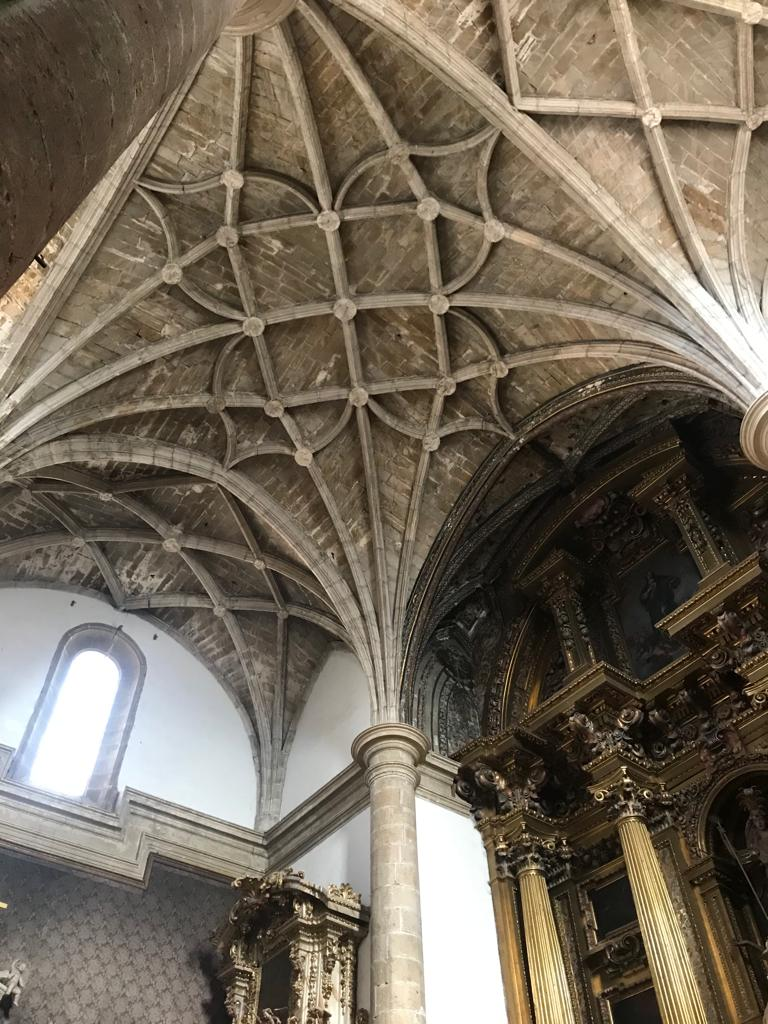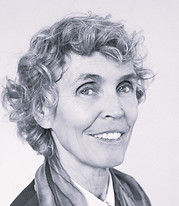
HISTORIC MASONRY STRUCTURES

HISTORIC MASONRY STRUCTURES

HISTORIC MASONRY STRUCTURES


INVITED LECTURERS
Jane Burry
Head of School of Architecture and Civil Engineering at University of Adelaide
Professor Jane Burry is an architect, Head of School of Architecture and Civil Engineering at University of Adelaide, Australia, Deputy Director of the Australian Research Council Training Centre for Next Gen Architectural Manufacturing, and President of Australian Deans of the Built Environment and Design. She was previously Dean, School of Design and Architecture at Swinburne University (2017-23) and Director of the Spatial Information Laboratory at RMIT University (2012-17). She is visiting Faculty at the Institute for Advanced Architecture (IAAC) in Barcelona. Jane has practiced, researched, and taught internationally, including involvement as a project architect in the technical office at Antoni Gaudí’s Sagrada Família Basilica with partner Professor Mark Burry. As lead author of The New Mathematics of Architecture, T&H, editor of Designing the Dynamic, Melbourne Books, co-author of Prototyping for Architects, T&H, and The Sound of Space, Routledge, and over 150 other publications her research has spanned computational design, geometrical and environmental design modelling, simulation, optimisation and prototyping in architecture. A co-chair of IASS 23, FABRICATE 2020, previously, she is a recent recipient of an Australian Timber Design Award, Australian Good Design Award, Gold, ACADIA Excellence in Teaching Award and Robots in Architecture Pioneer Award.
01

Professor
Matthew DeJong
02

Professor at Berkeley University of California
Matthew DeJong is a Professor in Structural Engineering, Mechanics and Materials at University of California, Berkeley. He was a university lecturer in Structural Engineering and a Fellow and Director of Studies in Engineering at St Catharine’s College. He was a Fulbright Scholar at the Technical University of Delft and completed his PhD at the Massachusetts Institute of Technology. He holds an undergraduate degree in Civil Engineering from the University of California, Davis, and worked as a structural design engineer in California. His research interests lie broadly in the field of structural engineering, but are primarily focused in the areas of earthquake and masonry structures.
Professor
Aguinaldo Fraddosio
Professor at Polytechnic University of Bari
Aguinaldo Fraddosio, Ph.D., is a structural engineer and associate professor of “Scienza delle Costruzioni” at the Department of Architecture Construction and Design (ArCoD) of the Polytechnic University of Bari.
His research activity, developed within an established network of Italian and international scholars, is focused on fundamental and applicative issues of solids, structural, and experimental mechanics. His research interests in historic masonry constructions concern advanced applications of the lower bound theorem of limit analysis for corbelled structures, arches, vaults, and domes; dynamics of curved masonry constructions; advanced strengthening techniques; damage characterization. On these subjects, he performed both theoretical and experimental research. Moreover, he studies stability and bifurcation in finite elasticity; advanced ultrasonic approaches for mechanical characterization of materials; acoustoelasticity; tensegrity structures; innovative approaches for structural dynamic identification; vibro-impact dampers for seismic protection of structures. He is the principal investigator in research projects on existing and historical structures, seismic metamaterials, and non-linear ultrasonic techniques for damage characterization. He carries out an intense didactic activity, mostly at MSc and PhD level, also giving lectures and seminars for national and international courses.

03
Professor
José Lemos

04
National Laboratory for Civil Engineering (LNEC)
Dr José Lemos is a Principal Researcher at the National Laboratory for Civil Engineering (LNEC) in Lisbon, Portugal. He holds a Civil Engineering degree from the University of Porto and a PhD in Rock Mechanics from the University of Minnesota, Minneapolis. He has been involved in the development of the discrete element codes UDEC and 3DEC. His research interests include dam foundations in rock, seismic analysis of masonry structures and discrete element modelling.
Professor
Assistant Professor at Rome Tor Vergata
Nicola Nodargi
05
Nicola A. Nodargi is an Assistant Professor at the Department of Civil Engineering and Computer Science of the University of Rome Tor Vergata, Italy. He received his M.Sc. degree in Civil Engineering and his M.Sc. degree in Mathematics from the same university, where he earned his Ph.D. in Civil Engineering in 2016. His Ph.D. thesis was selected as a finalist for the 2016 ECCOMAS Best Ph.D. Thesis award and was recognized with the 2016 GIMC Best Ph.D. Thesis award and the 2017 ECCOMAS Best Ph.D. Presentation award. As a Postdoctoral researcher, he was a visiting scholar at the Technical University of Braunschweig, Germany. His research activity, framed in the field of computational mechanics, focuses on the development of computational strategies for the analysis of structures exhibiting material and geometric nonlinearities, with a particular interest in the static and dynamic response of historical masonry constructions.

Assistant Professor
Paulo Lourenco
06
Professor
Professor at the University of Minho

Professor at the Department of Civil Engineering, University of Minho, Portugal. Experienced in non-destructive testing, advanced experimental and numerical techniques, innovative repair and strengthening techniques, and earthquake engineering. President of ICOMOS ISCARSAH - International Scientific Committee on the Analysis and Restoration of Structures of Architectural Heritage. Specialist in structural conservation and forensic engineering, with work on 200 monuments, including 20 UNESCO World Heritage Sites. Revision leader of the European masonry code (EN 1996-1-1). Coordinator of the MSc on Structural Analysis of Monuments and Historical Constructions, with alumni from 75 countries and European Heritage / Europa Nostra Award. Editor of the International Journal of Architectural Heritage, Taylor & Francis. Author of “Historic Construction and Conservation” and “Finite Element Analysis for Building Assessment”, Routledge (2019 and 2022). Supervised 80 PhD theses and coordinated multiple national and international research projects. Awarded a European Research Council Grant to develop an integrated seismic assessment approach for heritage buildings. Coordinator of a European Doctoral Network with 15 PhD students on sustainable building lime applications.
08
Giulio Mirabella Roberti
Professor at the University of Bergamo

Professor
PhD in Structural Engineering, Master Degree in Structural Engineering and in Architecture at Politecnico of Milan.
Full Professor of Restoration since 2017 at the School of Engineering of the University of Bergamo, he was Associate Professor in Restoration since 1998, before in the “Mediterranean” University of Reggio Calabria and then in the Iuav University of Venice until 2007; from 1991 he has been Assistant Professor of Mechanics of Structures at the Politecnico of Milan. Former director of the Bachelor and Master programs in Building Engineering (2013-2018), he is member of the board of PhD program in History and Preservation of Architecture at the Politecnico di Milano; he also teaches “wood construction strengthening” at the Specializing School in Architectural and Landscape Heritage Preservation.
His research interest focus on many topics involved in the study of ancient buildings: damage analysis and building techniques recognition; monitoring and control of historic buildings; tall buildings (bell towers) long-term behaviour; mechanical characterization of traditional building materials; structural analysis of complex masonry structures by Finite Elements Method and by Discontinuous Deformation Analysis.
Eugenio Ruocco
Professor at the University of Campania “Luigi Vanvitelli”
Professor Eugenio Ruocco is a researcher and educator specializing in structural mechanics and computational modeling. His expertise includes structural stability, the Finite Element Method (FEM), the Boundary Element Method (BEM), and isogeometric approaches. His research covers masonry structures, plates, beams, and innovative materials. In recent years, he has focused on integrating artificial intelligence into structural mechanics, developing neural network algorithms for defect detection and structural performance assessment. His findings have been published in international journals.
He has collaborated with leading institutions, including Texas A&M University (J.N. Reddy), Graz University of Technology (Gernot Beer), and the University of Queensland (C.M. Wang), contributing to structural modeling and optimization. He has also been a visiting professor at the National University of Singapore, the University of Newcastle (Australia), Texas A&M, and Middle East Technical University.
Beyond research, Professor Ruocco is actively involved in academia, serving on editorial boards and as a reviewer for leading international journals. He supervises PhD students and teaches courses in Structural Mechanics. With over 60 peer-reviewed publications, he continues to contribute to international research projects in structural engineering and computational analysis.
09

Professor
Gabriele Milani
Politecnico di Milano
Full Professor of Structural Mechanics at the Technical University of Milan, Italy. Chair professor at Yangzhou University, PRC (2019-2020). His scientific interests are manyfold and include masonry modelling and experimentation, seismic engineering, preservation of historical constructions, timber, limit analysis, innovative strengthening with composite materials, Structural Health Monitoring, genetic algorithms (GA), rubber vulcanization and elastomeric seismic isolation. He published more than 350 papers in high impact international journals and co-chaired both the International Masonry Conference in 2018 and the International Brick and Block Masonry Conference in 2024. EB member in both high reputation journals and international congresses, he was awarded a Telford Premium and a K.J. Bathe Award. He is Associate Editor of Engineering Failure Analysis and Engineering Structures, both published by Elsevier.
07

Professor
10
Marianne Saba
Professor at the University of Balamand (Lebanon)

Marianne Saba is an Associate Professor of Civil and Environmental Engineering at the University of Balamand. Her research expertise lies in the development and characterization of advanced materials for civil engineering applications, with a particular focus on geopolymers, eco-construction materials, and sustainable binders. She has led numerous projects on the experimental and numerical evaluation of materials, investigating their chemical, mechanical, microstructural, thermal, and durability properties for innovative engineering use. She leads national and international research collaborations with institutions in France and Greece, and serves as an active member of AUF’s Commission d’Internationalisation, contributing to academic exchange and scientific advancement in the region.
Professor